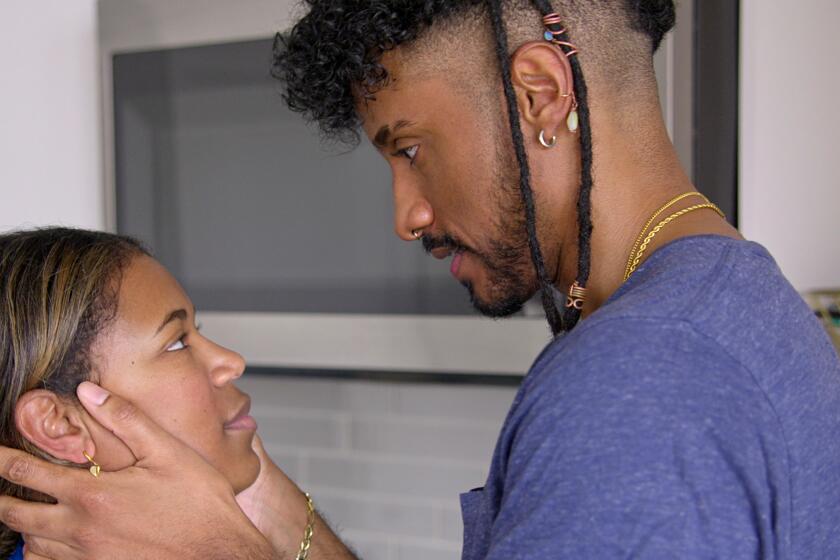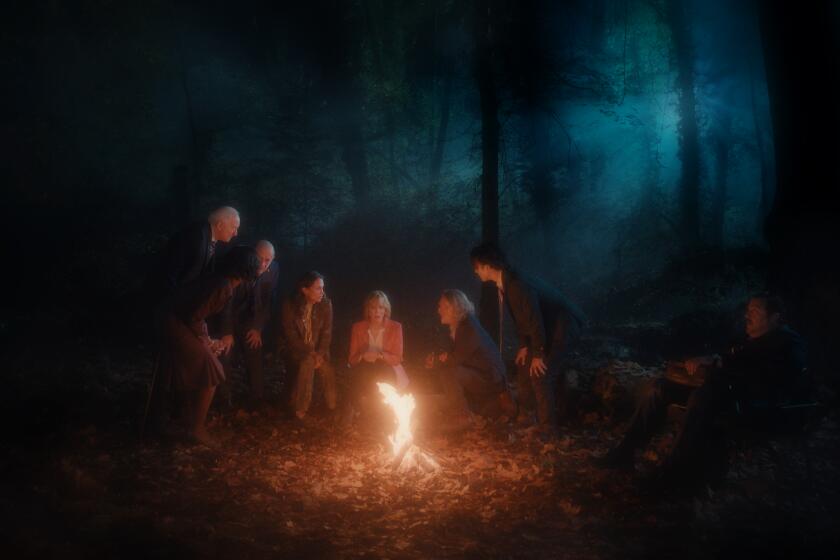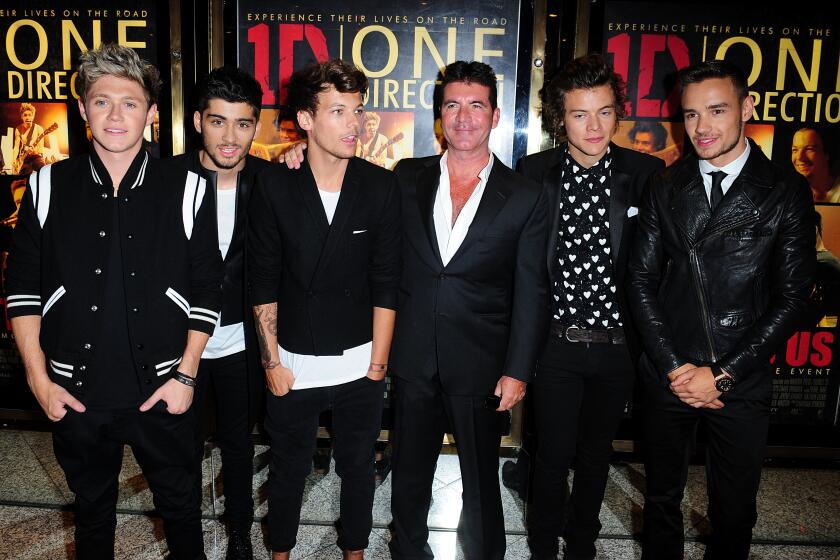She’s just tops among tots
It’s Wednesday night at the Warner Theatre, the clock hovering around the normal bedtime hour for this preschool-and-up set, and the kids are on their feet. Screaming. “Vamos a la casa! Vamos a la casa!”
Up on stage, the object of their adoration is a woman dressed as a little girl, with a brown bob and a purple backpack, a pink T-shirt and bright orange shorts.
“Hola!” she yells to her pint-size admirers. “Hola!” they holler back, not at all in unison. “Hola, hola, hola ... !”
Her name is Dora, “Dora the Explorer,” and she is the star character in a Nickelodeon-created cartoon of the same name that is enjoying a zenith of popularity, ranking first on commercial television among the 2- to 5-year-old set.
First appearing on Nick Jr. in 1999, “Dora the Explorer” has since grown so popular that the network recently surpassed $1 billion in merchandising sales of Dora-related products. In the preschool demographic, Dora sells more footwear than Barbie. She sells more pajamas than Pooh. She sells more Band-Aids than Spider-Man, and she even tops those Disney princesses -- Sleeping Beauty, Snow White and Cinderella -- when it comes to children’s apparel. The Dora Popsicle is Good Humor’s bestseller.
And she’s No. 1, period, when it comes to that all-important arbiter of what’s hot and what’s not among the tots: birthday partyware. According to American Greetings, more kids -- boys and girls -- want Dora on their party plates than any other character.
“It’s been bubbling up for a while,” says Herb Scannell, president of Nickelodeon Networks. “It’s moving into the territory of ‘Sesame Street’ and ‘Blue’s Clues,’ which reach icon status and have a rich life beyond TV.”
Dora happens to be Latina. And bilingual. Not that kids seem to notice much. Or, more to the point, not that kids care. Ask what color Dora is, and they’ll say things like “she has a pink shirt.” To them, Dora is just a 7-year-old girl who spends her days embarking on adventures with her friend Boots the monkey and evading the evil fox Swiper ... all the while effortlessly switching between English and Spanish.
“I think that Dora the character has a lot going for her besides the fact that she’s somebody that a large percentage of the population can identify with,” says Amy Jordan, director of research on children and media at the Annenberg Public Policy Center of the University of Pennsylvania. “That program is one of the most well-researched programs out there for children, and not just preschoolers. They put a lot of time and effort into making sure the character resonates with kids and that children are getting something out of the program beyond an interest in buying a doll.”
Like its Nickelodeon predecessor, the popular “Blue’s Clues,” Dora is designed to encourage children to participate. In each episode, as she wanders through her adventure, she asks questions of her audience, then pauses, looking out from the screen expectantly, as if an answer from her viewing “friends” is essential. And kids respond, yelling their answers back at the screen, or, in the case of the “Dora the Explorer Live!” show -- it moves to New York’s Radio City Music Hall next month -- back at the stage.
Nickelodeon created Dora out of a recognition that Latino preschool viewers lacked TV role models, but her huge crossover appeal only underscores what children’s television has demonstrated since “Sesame Street” started putting children (and adults) of all hues on its landmark program decades ago: Ethnic programming need not be niche programming.
Dora is watched by 21 million viewers (adults and children) each month -- the show is on Nick Jr. at 10 and 11 a.m. on weekdays, and on “Nick on CBS” at 11 a.m. on Saturdays -- and, of that total viewership, 3 million are Latino children ages 2 to 11.
“It says volumes,” says Lisa Navarette, spokeswoman for the Washington-based National Council of La Raza. “ ‘Dora the Explorer’ is a great example of what we’ve been talking about for years: It’s not only important to have Latinos on television for Latinos, we also believe that a character on a show that is well done can resonate with other viewers. This is clearly the case with Dora.”
Dora was born when executives at Nickelodeon looked at the demographics and realized that the Latino population was underrepresented in TV programming, Scannell says.
“We believe that diversity is a strength,” Scannell says. “Here comes Dora, and she’s anchored in the Latin culture but is the highest-rated show on Nick Jr. It disproves some conventional thinking that characters that are ethnic aren’t universal or relatable.”
But it also illustrates the gap between what parents are allowing -- or, in many cases, encouraging -- their children to watch and what they watch themselves.
“I think producers [of children’s television] have found that it doesn’t hurt their bottom line to have diverse casts -- and maybe it even helps,” Jordan says. “Certainly, in children’s television they aren’t creating the niche audiences like they have in adult TV, where those groups are often cordoned off in their own little corner.”
Although the latest census numbers show that the nation is 13% Latino, Latino characters on prime-time television have typically hovered at or below the 4% mark. This season was supposed to represent a boom: “George Lopez” -- a decent hit averaging about 8 million viewers per episode -- returned for another season, and Fox was expected to air two new shows starring Latino characters (“Luis” and “The Ortegas”).
But “Luis” was yanked, and “The Ortegas” never made it on the air.
More to Read
The biggest entertainment stories
Get our big stories about Hollywood, film, television, music, arts, culture and more right in your inbox as soon as they publish.
You may occasionally receive promotional content from the Los Angeles Times.










